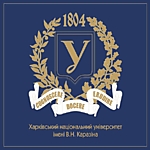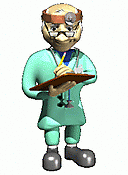EXAM CARDS
Card #1
1. Classification of CCT. Short-term and long-term complications of open CCT. Emergency care at pre-hospital stage.
2. Osteochondroses. Etiopathogenesis. Classification. Clinical presentation and diagnostics. Indications for surgical treatment, and its principles.
3. Pathologies of the brain vessels which manifest with hemorrhagic strokes. Clinical presentation and diagnostics. Indications for surgical treatment, and its principles.
Card #2
1. Hydrocephalus. Etiopathogenesis. Classification. Clinical presentation and diagnostics. Principles of surgical treatment.
2. Traumatic injuries of spine and spinal cord.. Classification. Clinical presentation and diagnostics. Emergency care at pre-hospital stage.
3. Functional neurosurgery. Basis for indications and principles of surgical treatment of Parkinsonism, epilepsy, pediatric cerebral palsy and other diseases.
Card #3
1. Brain compression in CCT. Clinical presentation and diagnostics. Indications for surgical treatment, and its principles.
2. Brain tumors. Classification. Clinical presentation and diagnostics. Principles of therapy.
3. Pathology of brain vessels which manifests with ischemic phenomena. Clinical presentation and diagnostics. Indications for surgical treatment, and its principles.
Card #4
1. Hypertensive syndrome. Mechanism of development. Objective signs of hypertensive syndrome: a) clinical; b) ophthalmological; c) radiological.
2. Gunshot injuries of brain and skull. Classification. Emergency care. Indications for surgical treatment.
3. Spinal cord tumors. Classification. Clinical presentation of the extramedullar tumors of the spinal cord and their diagnostics. Principles of surgical treatment.
Card #5
1. Osteochondrosis of cervical spine. Clinical presentation and diagnostics. Principles of treatment.
2. Carotid-cavernous fistulas. Etiopathogenesis. Clinical presentation and diagnostics. Modern methods of treatment.
3. Spinal cord tumors. Classification. Clinical presentation of the intramedullar tumors of the spinal cord and their diagnostics. Principles of treatment.
Card #6
1. Traumatic injuries of the spinal cord. Clinical presentation and diagnostics. Modern methods of restorative treatment.
2. Brain tumors. Clinical presentation. Mechanisms of development of hypertensive syndrome. Indications for surgeries and their principles.
3. Traumatic injuries of the peripheral nervous system. Classification. Clinical presentation. Emergency care. Principles of surgical treatment.
Card #7
1. Complications in trauma of the spine and spinal cord. Their prevention and treatment.
2. Angiography. Role of this method in development of neurosurgery.
3. Epilepsy. Etiopathogenesis. Classification. Diagnostics. Indications for surgical treatment, and its principles.
Card #8
1. Pathology of the brain vessels. Classification. Clinical presentation. Diagnostics. Modern principles of surgical treatment.
2. Role of ophthalmologic examinations in diagnostics of cerebral diseases.
3. Joint and combined CCT. Peculiarities of clinical presentation, diagnostics and emergency care.
Card #9
1. Reconstructive neurosurgery. Modern directions of its development.
2. Trauma of the spine and spinal cord. Classification. Clinical presentation. Diagnostics. Indications for surgical treatment, and its principles.
3. Development defects of the brain and spinal cord. Diagnostics. Indications for surgical treatment.
Card #10
1. Role of supplemental methods of investigation in diagnostics of cerebral diseases; Echo-EG, Ultrasonography, EEG, ACT, MRI.
2. Focal symptoms in brain tumors, mechanisms of development and correlation with hypertensive syndrome.
3. Closed CCT. Classification. Clinical presentation. Indications for urgent surgical treatment.
Card #11
1. Osteochondroses. Classification. Clinical presentation. Diagnostics. Indications for surgical treatment, and its principles.
2. Occlusive-stenotic lesions of brain vessels. Etiopathogenesis. Clinical presentation. Diagnostics. Indications for surgical treatment, and its principles.
3. Long-term complications of CCT. Indications for surgical treatment.
Card #12
1. Brain abscesses. Etiopathogenesis. Clinical presentation and diagnostics. Emergency care. Indications for surgical treatment, and its principles.
2. Role of liqourological and liquorodynamic investigations in diseases of the spinal cord.
3. Joint and combined CCT. Peculiarities of clinical presentation, diagnostics and emergency care in this pathology.
Card #13
1. Occlusive-hydrocephalic syndrome. Etiopathogenesis. Clinical presentation and diagnostics. Emergency care.
2. Supplemental methods of investigation and sequence of their application in patients with suspected brain tumor.
3. Ischemic strokes. Etiopathogenesis. Clinical presentation and diagnostics. Indications for surgical treatment and its principles.
Card #14
1. Open CCT. Short-term complications, emergency care at pre-hospital stage of treatment.
2. Hemorrhagic strokes. Etiopathogenesis. Clinical presentation and diagnostics. Indications for surgical treatment and its principles.
3. Parkinsonism. Etiopathogenesis. Clinical presentation and diagnostics. Indications for surgical treatment and its principles.
Card #15
1. Osteochondroses. Etiopathogenesis. Classification. Peculiarities of clinical presentation in pathology of intervertebral disks of lumbar spine.
2. Arteriovenous malformations of brain vessels. Clinical presentation and diagnostics. Modern principles of surgical treatment.
3. Pain syndromes. Neuralgias, causalgias, phantom pains. Clinical presentation and diagnostics. Emergency care. Indications for surgical treatment, and its principles.
Card #16
1. Angiography, its types and role of this method in development of neurosurgery.
2. Open craniocerebral trauma. Classification. Clinical presentation. Emergency care, early complications in open CCT and their prevention.
3. Brain vessel pathology which requires surgical treatment. Classification. Clinical presentation. Diagnostics. Modern principles of surgical treatment.
Card #17
1. Hydrocephalus. Etiopathogenesis. Clinical presentation and diagnostics. Emergency care in occlusive syndrome. Indications for surgical treatment and its principles.
2. Short-term and long-term complications in open CCT and their prevention, indications for surgical treatment.
3. Traumatic injuries of spine and spinal cord. Classification. Clinical presentation. Diagnostics. Emergency care. Indications for surgical treatment, and its principles.
Card #18
1. Compression of the brain. Pathomorphology. Clinical presentation.
Diagnostics. Treatment.
2. Pathology of the brain vessels which manifests with ischemic strokes.
Diagnostics. Indications for surgical treatment.
3. Stereotactic method in neurosurgery, indications for its application.
Card #19
1. CCT. Classification. Clinical presentation. Diagnostics. Emergency care in closed CCT at pre-hospital stage.
2. Hydrocephalus. Etiopathogenesis. Classification. Diagnostics. Emergency care in occlusive syndrome. Indications for surgical treatment and its principles.
3. Short-term and long-term complications in open CCT, their prevention and emergency care. Indications for surgical treatment of long-term complications of open CCT.
Card #20
1. Joint and combined CCT. Peculiarities of clinical presentation, diagnostics and emergency care.
2. Traumatic injuries of the spine and spinal cord. Classification. Clinical presentation. Diagnostics. Emergency care at pre-hospital stage.
3. Brain vessel pathology which manifests with hemorrhagic strokes. Clinical presentation and diagnostics of hemorrhagic strokes, emergency care in these disorders.
Card #21
1. Osteochondroses. Etiopathogenesis. Classification. Clinical presentation and differential diagnostics. Urgent care in pain syndromes due to secondary radiculoneuritis.
2. Spinal cord tumors. Classification. Clinical presentation. Differential diagnosis. Role of supplemental investigations in establishment of the final diagnosis. Principles of surgical treatment. Prevention of complications.
3. Brain vessel pathology which manifests with ischemic strokes. Evaluation of supplemental diagnostic methods. Principles of surgical treatment.
Card #22
1. Open CCT. Classification. Clinical presentation. Diagnostics. Indications for surgical treatment and its principles.
2. Indications for urgent surgical intervention in cerebrovascular pathology.
3. Osteochondroses. Classification. Clinical presentation. Diagnostics. Indications for surgical treatment, and its principles.
Card #23
1. Gunshot injuries of skull and brain. Classification. Clinical presentation. Emergency care. Principles of surgical treatment.
2. Functional neurosurgery. Stereotactic method in neurosurgery, indications for its application. Prospects for the development of this technique.
3. Emergency care and transportation of patients with traumatic injuries of spine and spinal cord.
Card #24
1. Echoencephalography and its role in diagnostics of organic diseases of the brain.
2. Emergency care and transportation of patients with traumatic injuries of spine and spinal cord.
3. Brain vessel pathologies which require surgical treatment. Carotid-cavernous fistulas. Clinical presentation and diagnostics. Principles of surgical treatment.
Card #25
1. Brain vessel pathology. Classification. Clinical presentation. Diagnostics. Evaluation of data provided by supplemental investigations in this pathology.
2. Role of ophthalmological examinations in diagnostics of cerebral diseases.
3. Peculiarities of emergency care in patients with joint and combined CCT.
Head of the neurosurgery
department, Professor V.A.Pyatikop



Поделиться с друзьями: